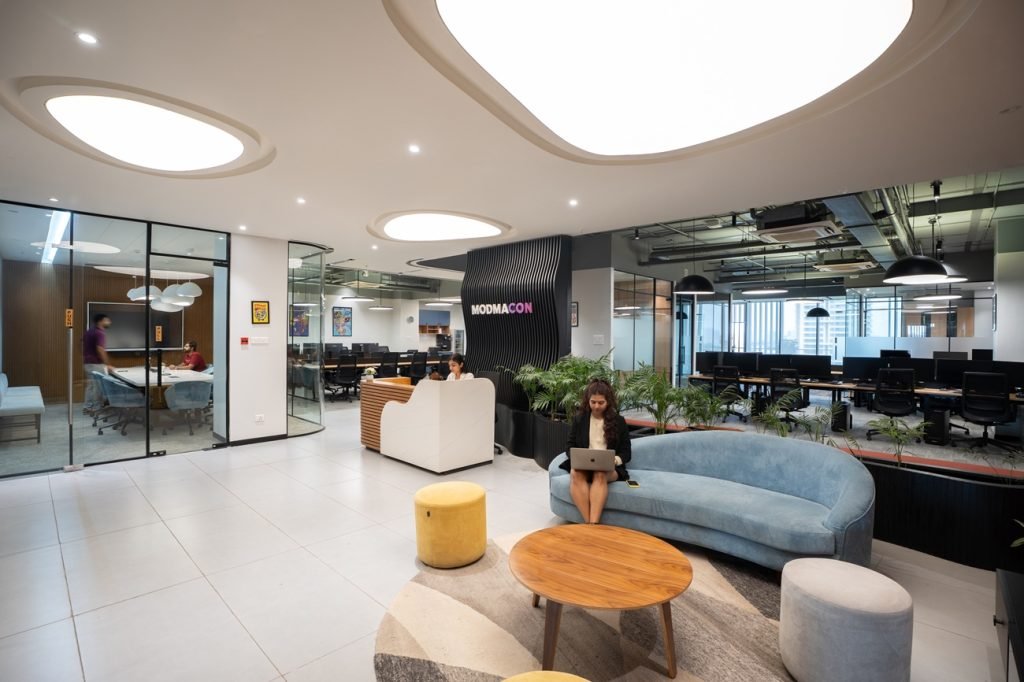Effective office interior is a strategic tool that shapes company culture, employee productivity, and business success. According to a study by the World Green Building Council, modern office designs can boost productivity by up to 15%. A thoughtfully crafted workplace encourages innovation, collaboration, and well-being, ensuring that employees feel both inspired and equipped to do their best work.
In an office design, every element should contribute to a greater purpose: a workplace that reflects your brand, facilitates seamless operations, and enhances overall efficiency.
Space Planning: The Foundation of Efficiency
Effective space planning ensures that every square foot of your office is utilized optimally. Architects and designers often emphasize the balance between positive space (furnished areas) and negative space (open areas). A cramped, cluttered office can feel overwhelming, while an excessively sparse environment may seem uninspiring. The key is achieving equilibrium that promotes movement, interaction, and focus.
A Harvard Business Review study found that employees in open-plan offices have 32% fewer face-to-face interactions, highlighting the need for strategic zoning. Incorporating a mix of collaborative hubs, private focus zones, and relaxation areas can address diverse work styles while maintaining productivity.
The Impact of Form: Blending Structure and Flexibility
Form defines the aesthetic and psychological experience of a space. Geometric shapes, such as structured furniture and linear designs, communicate stability and order. However, an overuse of rigid forms can stifle creativity. To counterbalance this, integrating organic elements like plants, curved furniture, or biophilic design can create a more inviting and dynamic atmosphere.
Colour Psychology: More Than Just Aesthetic Appeal
Colour directly influences mood and productivity. Research by the University of Texas found that neutral grey, beige, and white workspaces can induce feelings of sadness, especially in women. Meanwhile, blue and green hues foster calmness and focus, making them ideal for knowledge-based industries.
Tata Consultancy Services, known for its innovation-driven work culture, incorporates colour psychology in its offices to enhance employee engagement and cognitive function. By aligning colour schemes with company values, organizations can create an environment that subtly reinforces their brand identity.
Smart Resource Management: Investing in Productivity
Providing employees with the right tools and technology is essential for efficiency. According to a McKinsey report, businesses that implement smart workplace technology see a 20-30% improvement in efficiency. Investing in ergonomic furniture, high-speed connectivity, and adaptable workstations minimizes downtime and enhances workflow.
Aditya Puri, former MD of HDFC Bank, once remarked, “If you don’t change with the times, the times will change you.” Businesses that proactively integrate new technology into their office infrastructure position themselves for sustained success.
Lighting: The Overlooked Productivity Booster
Lighting affects employee well-being more than most realize. The American Society of Interior Designers found that 68% of employees complain about their office lighting. Natural light exposure, on the other hand, has been shown to improve mood and alertness, reducing fatigue by up to 40%.
Incorporating large windows, skylights, and adjustable task lighting ensures that employees have sufficient illumination without discomfort. Adjustable blinds or smart glass technology can help regulate glare, making workspaces adaptable to different needs.
The Bottom Line: A Well-Designed Office is a Business Asset
Office design is about creating an environment that aligns with business goals and employee needs. Thoughtful space planning, smart use of form and colour, investment in resources, and strategic lighting all contribute to a high-performing workspace. By embracing intelligent office design principles, businesses can create an environment where employees thrive, creativity flourishes, and success becomes inevitable.





